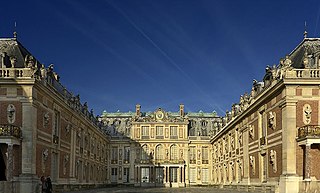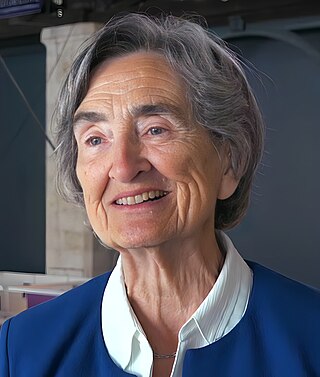
Roland Émile Mousnier was a French historian of the early modern period in France and of the comparative studies of different civilizations.

The French nobility was a privileged social class in France from the Middle Ages until its abolition on 23 June 1790 during the French Revolution.

Patrick Cabanel is a French historian, director of studies at the École pratique des hautes études and holder of the chair in Histoire et sociologie des protestantismes. He mainly writes on the history of religious minorities, the construction of a secularised French Republic and French resistance to the Shoah.

Jean-Marie Rouart is a French novelist, essayist and journalist. He was elected to the Académie française on 18 December 1997.
Christian Settipani is a French genealogist, historian and IT professional, currently working as the Technical Director of a company in Paris.
Régine Pernoud was a French historian and archivist. Pernoud was one of the most prolific medievalists in 20th century France; more than any other single scholar of her time, her work advanced and expanded the study of Joan of Arc.

The Seven Noble Houses of Brussels were the seven families or clans whose descendants formed the patrician class and urban aristocracy of Brussels, Belgium.
Raimond de Beccarie de Pavie, baron (Seigneur) de Fourquevaux was a French soldier, politician, and diplomat.

The Honneurs de la Cour were ceremonious presentations to the sovereign at the Royal Court of France that were formal for women but more casual for men. It was an honour granted only to the families of ancient nobility. It allowed them to approach the King and the Queen of France.
Robert Muchembled is a French historian. In 1967, he passed the Agrégation in history. In 1985 he was awarded a doctorate for his thesis on attitudes to violence and society in Artois between 1440 and 1600. In 1986 he became Professor of Modern History at Paris 13 University. He has written notably about witchcraft, violence and sexuality. Some of his works have been translated into English, German, Spanish, Italian, German, Dutch, Croatian, Modern Greek, Turkish, Chinese, Japanese, Polish and Portuguese.
Richard de Millau (Milhau) was an 11th-century Cardinal and a major player in the Gregorian reform implemented in the South of France at the turn of the eleventh and twelfth centuries.
Pierre-Jean Souriac is a contemporary French historian, a Lecturer in Modern History at Jean Moulin University Lyon 3.
Caroline Giron-Panelnée Giron is a French historian and musicologist.

Arlette Jouanna was a French historian and academic. She was professor emerita at l’Université Paul-Valéry. She was a member of the Centre de recherches interdisciplinaires en sciences humaines et sociales (CRISES). She specialised in the political and social history of sixteenth-century France, especially the history of the nobility and the French Wars of Religion.
Anne de Seguier, also given as Anne Séguier was a French poet and salon holder.

Michel Parisse was a French historian who specialized in medieval studies. He was a professor emeritus at the University of Paris 1 Pantheon-Sorbonne.

Georges Dansaert PB, was a Belgian lawyer, historian, poet, heraldist, genealogist, and writer from Brussels. In 1938, he received the Hercule-Catenacci prize from the Académie Française along with Baudouin de Lannoy for their book Jean de Lannoy le Bâtisseur, 1410–1493. He descended from the Houses of Sleeus and Sweerts of the Seven Noble Houses of Brussels. The Dansaert family, now extinct, was an old and prominent ship-owning family from Brussels. He was a director of the Association Royale des Descendants des Lignages de Bruxelles. He was a donat of the Sovereign Military Order of Malta.
Marianne Carbonnier-Burkard is a French historian of modern Protestantism and honorary docent at the Faculté de théologie protestante de Paris. She is vice-president of the Société de l'histoire du protestantisme français and a member of the Comité consultatif national d'éthique pour les sciences de la vie et de la santé (2013-2017).

Michelle Zancarini-Fournel is a French historian. She is professor emeritus of contemporary history at the Claude Bernard University Lyon 1, and former co-director of the semi-annual journal, Clio. Femmes, genre, histoire. Her research focuses on the history of popular movements. She has published books and numerous articles in various journals. She is a specialist in the history of women and gender, as well as May 68.

Gabrielle de Rochechouart, dame de Lansac, was a lady-in-waiting, a Dame d'honneur or Dame du Palais to Catherine de' Medici.












